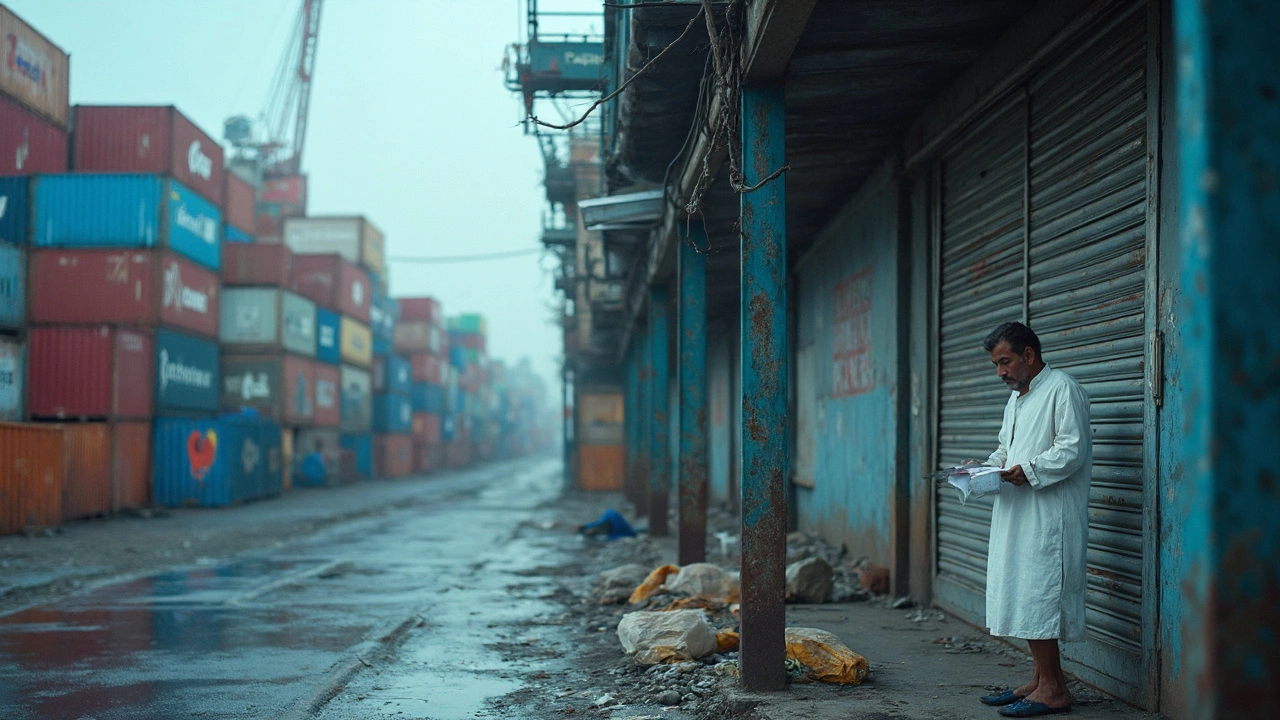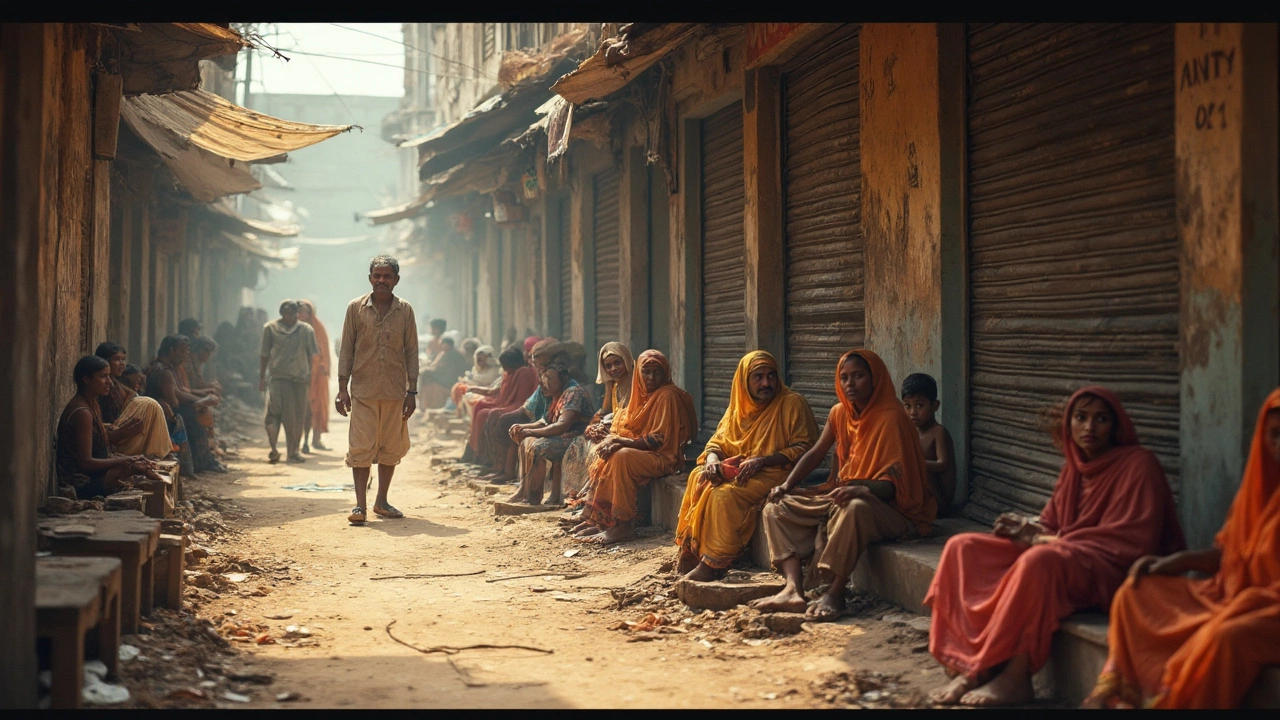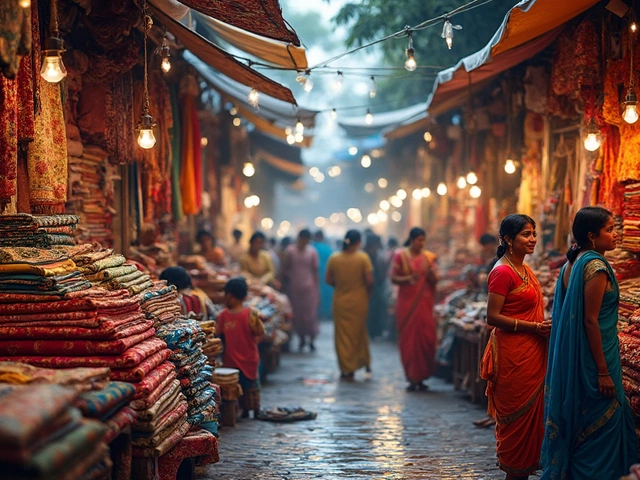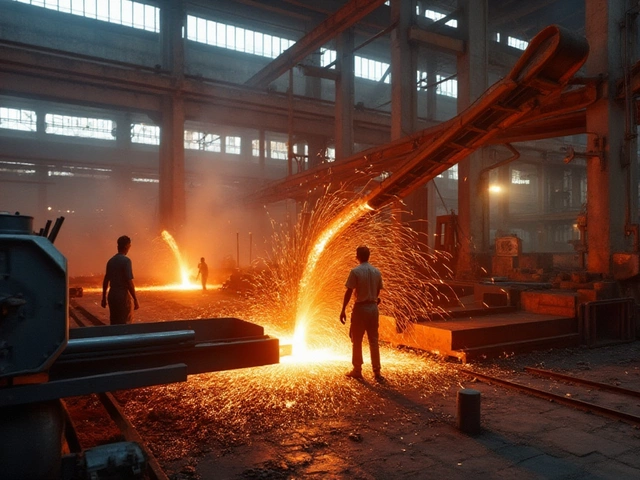If you grew up in India, chances are someone in your family either wore, worked with, or sold fabric made right here. The Indian textile industry was always a big deal—massive job creator, pillar for exports, the works. But that proud legacy went downhill, fast. What happened? And why did so many textile manufacturers suddenly find themselves out of business?
Start with this: labor costs shot up, but product prices didn’t. Meanwhile, foreign cloth flooded the market, often selling for less than what local producers paid to make it. Instead of getting help, manufacturers tangled with outdated rules and shaky infrastructure. It’s not just numbers: scores of mills shut their doors, whole towns lost livelihoods, and once-bustling factories fell silent.
There’s more. International buyers now want fast, cheap fashion and top-notch quality on tight deadlines. Younger customers shop online, care about brands, and expect eco-friendly cloth—something old-school mills just couldn’t adapt to quickly enough. The crash hit small and mid-sized manufacturers the hardest; these were the same folks who’d once fueled India’s textile fame.
- How Did India's Textile Boom Turn into Bust?
- Competition and Cheaper Imports: The Game Changers
- Pain Points for Textile Manufacturers on the Ground
- Lessons Learned and Hope for a Comeback
How Did India's Textile Boom Turn into Bust?
Not so long ago, the Indian textile industry ruled the global market, sending everything from cotton shirts to luxury sarees around the world. India was the second-largest textile producer after China and exported textiles worth over $40 billion in 2014. Textile companies gave jobs to more than 45 million people, especially in smaller cities and rural areas.
So, what went wrong? For starters, the industry didn’t keep up with new trends and tech. While global players spent big on automation and digital supply chains, a lot of Indian factories were still running old machines and relying on manual labor. This hurt efficiency and made it tough to fill big export orders quickly.
Another big problem was infrastructure. Power cuts, slow trains, jammed ports, and bad roads led to costly delays. Global buyers want speed—and when Indian suppliers missed deadlines, repeat orders dried up.
Let’s talk about government policies too. There was some help, yes, but not enough. Complicated taxes, red tape, and sudden rules (like demonetization and GST hikes) meant small textile manufacturers struggled to stay afloat. Also, not enough money was spent on research and new product development, especially when buyers started asking for sustainable or branded products.
- Labor costs rose, but worker skills didn’t always match new job needs.
- Many small textile units didn’t get access to cheap credit or loans.
- Stringent pollution controls were introduced, but without enough support to upgrade technology.
And while the rest of the world started buying more functional or smart textiles (like moisture-wicking sportswear), Indian manufacturers were slow to switch from traditional products. This made their offerings less attractive to big international players.
| Year | India's Textile Exports (USD Billion) | Powerloom Units Closed |
|---|---|---|
| 2014 | 41.4 | 2,000 |
| 2018 | 39.2 | 6,000 |
| 2022 | 32.2 | 15,000+ |
This perfect storm—tech lag, slow upgrades, shaky support, and changing demand—slammed the breaks on what used to be a power-packed industry.
Competition and Cheaper Imports: The Game Changers
Ask any Indian textile industry insider about the last decade, and you’ll hear the same story: “China and Bangladesh ate our lunch.” As global trade opened up, international brands started shifting orders to countries where labor and land were way cheaper. This was a massive headache for textile manufacturers India had relied on—suddenly, they had to compete with T-shirts coming from Vietnam at half the price or with sarees shipped in from China looking identical but costing less.
Here’s a real kicker: after India signed several free trade agreements, import duties dropped. Suddenly, those cheap, well-finished garments from abroad started showing up in every street market. Local businesses just couldn’t keep up. In the last five years, India's imports of ready-made garments from China and Bangladesh shot up by over 30%. This isn’t just some boardroom figure—walk through Surat or Ludhiana, and you’ll see stalled warehouses and closed shop shutters.
If you want proof, check out the numbers:
| Year | Textile Imports (USD Billion) | Major Import Sources |
|---|---|---|
| 2019 | 6.5 | China, Bangladesh |
| 2022 | 8.3 | China, Bangladesh, Vietnam |
It’s not just price—cheaper imports also come with new patterns, synthetic blends, and flashy branding. Indian mills still focused on old-school cotton, but the world was moving to quick-dry, wrinkle-free stuff. While international players flooded Indian markets, local mills scrambled to retrofit machines—often too little, too late.
One more thing: with the rise of fast fashion, global brands demand huge quantities, tight timelines, and flexible, modern production lines. Indian mills, bogged down by bureaucratic hurdles and power cuts, lost out on these lucrative contracts. The reality? Surviving in such a cut-throat market needs more than legacy and tradition—it needs agility that most textile manufacturers India couldn’t muster in time.

Pain Points for Textile Manufacturers on the Ground
Talk to anyone running a textile factory in India and you’ll hear the same complaints circle back. First off, rising raw material costs hit hard. Since 2022, cotton prices shot up more than 40% at one point, putting massive stress on an industry where every paisa counts. When your neighbors in Bangladesh or Vietnam can buy cheaper cotton (sometimes because of better government deals), you’re already playing catch-up.
Power is another troublemaker. Unreliable electricity supply spiked operating costs for Indian textile industry units. Diesel generators became the new normal and ate up any slim profits. Some stats from 2023 show power makes up nearly 18% of total production cost for mill owners, something their international competitors rarely face.
Don’t forget about GST refunds getting stuck for months, leaving small manufacturers cash-starved. Then pile on old-school labor laws and never-ending paperwork, making it impossible for small businesses to keep up with bigger players or foreign companies with fewer regulations. For most textile manufacturers India, even getting credit from banks can take weeks or end in rejection.
Competition isn’t only international. Large integrated mills in India squeeze out the smaller outfits, offering lower prices due to scale. Meanwhile, the tech gap grows bigger each year—most small factories struggle to afford new machines or modern looms, so they lose out on speed and quality. Here’s a snapshot of some pain points manufacturers are dealing with:
- Soaring cotton and yarn costs
- Unstable and costly power supply
- Delayed GST and export refunds
- Difficulty getting bank loans or credit
- Outdated machines dragging down speed and quality
- Strict labor rules and compliance headaches
One eye-opener: in a 2023 survey by SIMA (The Southern India Mills’ Association), over 60% of small mills said cash flow problems and delayed payments from buyers were their biggest worry.
While bigger companies can sometimes ride out rough patches, smaller and mid-sized mills—once the backbone of the Indian textile industry—are the ones left struggling the most. These obstacles pile up fast, making survival feel like an everyday battle.
Lessons Learned and Hope for a Comeback
Talk to textile folks anywhere in India, and nearly everyone agrees: ignoring the warning signs was a big mistake. For decades, the Indian textile industry relied on low labor costs and sheer manpower. But when countries like Bangladesh and Vietnam started doing the same work even cheaper and faster, Indian mills just couldn’t keep up. Here’s what’s clear from the fallout.
- Investing in Upgrades: Old machines are out—automation and digital tech are in. Studies showed that in 2023, less than 30% of Indian textile factories had fully up-to-date equipment. Upgrading not only cuts costs but also boosts quality and speed.
- Tracking Market Trends: The global fashion scene changes in a snap. Indian textile manufacturers that survived focused hard on reading trends, designing eco-friendly fabrics, and scoring deals with brands outside the country.
- Streamlining Processes: Too much red tape made life tough. Some smart states trimmed paperwork to help factories get electricity and clear shipments quickly, giving local businesses a shot in the arm.
- Skill Development: Many textile workers lost jobs because their training hadn't kept up. Now, training centers in Surat and Tiruppur offer fast programs on newer machines and sustainable production.
There’s some good news: export numbers started rising in late 2024, especially for specialty and organic fabrics. Plus, the government just bumped up its support with new Production Linked Incentive (PLI) schemes—basically cashback for manufacturers who invest in modern tech and create jobs. Here's how the trend's looking recently:
| Year | Textile Export Value (USD Billion) |
|---|---|
| 2022 | 36.2 |
| 2023 | 35.0 |
| 2024 | 37.5 |
If you’re running a textile business or thinking of jumping in, don’t just stick to the old ways. Pay attention to the market, keep learning, and invest in modern tools. The crash was rough, but it’s showing everyone how to build smarter for the future, not just bigger.








